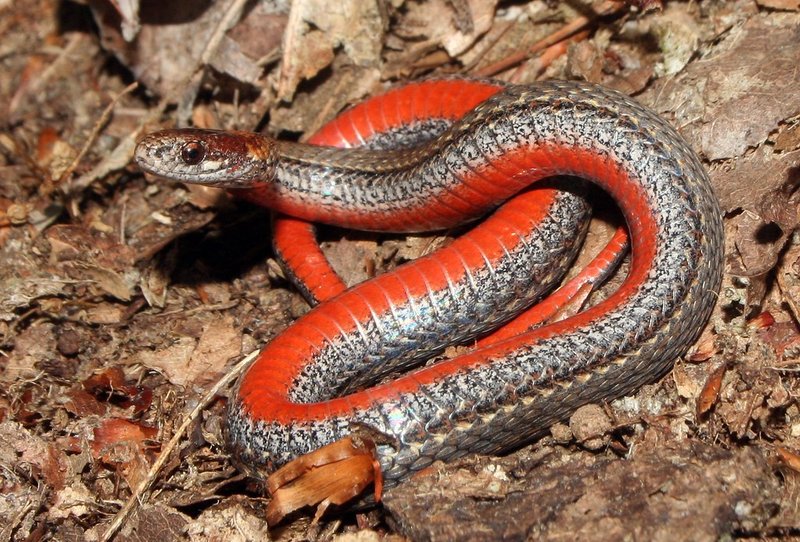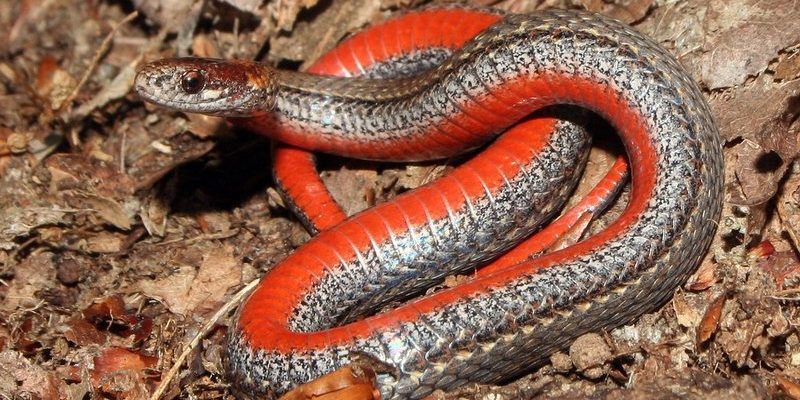
The Red-Bellied Snake is one of those creatures that might catch your eye if you’re wandering through a wooded area or a garden. With its striking colors and unique features, it’s hard not to be curious about this little reptile. Imagine spotting a snake that looks like it’s wearing a vibrant red-orange belly, almost like it’s flaunting its own stylish outfit. This snake can be found in various regions, primarily in North America, making it a familiar sight for many nature-lovers.
You might be wondering, what makes the Red-Bellied Snake stand out from other snakes? For starters, it’s not just about the colors. This snake has fascinating behaviors, habitats, and dietary preferences that set it apart. While many people may shy away from snakes due to fear, the Red-Bellied Snake is known for being quite gentle. Understanding more about this little guy can help us appreciate the biodiversity around us, especially in our backyards.
Physical Characteristics
When talking about the physical appearance of the Red-Bellied Snake, the first thing that comes to mind is its belly. The underbelly is a vibrant red or orange hue, which can be a real shocker against its dark brown or grayish body. This striking contrast isn’t just for show; it plays a role in how the snake interacts with the environment. It helps the Red-Bellied Snake blend into its surroundings while also warning potential predators. It’s like having a secret weapon, don’t you think?
Adult Red-Bellied Snakes typically measure around 12 to 20 inches long, although some may grow slightly larger. Their small size makes them relatively harmless to humans, which adds to their charm. They have slender bodies and smooth scales that make them agile when moving through their habitats. Their eyes are small and round, giving them a somewhat curious look that makes you want to pause and admire them.
Habitat and Range
The preferred habitat of the Red-Bellied Snake usually consists of moist environments. You can find them under logs, leaf litter, or even hiding among rocks. They thrive in forests, woodlands, and wetlands, and they can also make a home in your garden if conditions are right. Isn’t it fascinating how these little creatures adapt to their surroundings? They prefer areas that provide ample cover, which helps them evade predators.
Geographically, the Red-Bellied Snake is mostly found in the eastern United States and parts of Canada. Their range extends from the Great Lakes region down to the Gulf Coast. Knowing where to look for these snakes can enhance your next outdoor adventure. If you hike or walk through terranes like these, you might just spot one gliding through the underbrush.
Diet and Feeding Habits
The diet of the Red-Bellied Snake primarily consists of small invertebrates, such as earthworms and slugs. This dietary preference aligns with their need for moisture since these food sources are typically found in damp environments. Imagine this snake hunting diligently beneath piles of leaves, searching for a tasty earthworm—a real-life episode of nature’s version of scavenger hunting!
They are non-venomous and rely on their agility and speed to catch their prey. You won’t find this snake aggressively pursuing larger animals; instead, it uses its stealth to sneak up on its next meal. The feeding process is quite interesting as they usually swallow their prey whole. You might even find it astonishing how such a small snake can consume relatively large soft-bodied invertebrates!
Behavior and Lifespan
In terms of behavior, the Red-Bellied Snake is generally considered shy. They prefer to remain hidden and will only come out when necessary, especially during the warmer months. When startled, they may curl up into a ball or hide under nearby debris. This isn’t a sign of aggression; rather, it’s their survival instinct kicking in, keeping them safe from potential threats.
These snakes tend to be more active during the early morning and late afternoon, taking advantage of cooler temperatures to hunt and explore. As for their lifespan, in the wild, Red-Bellied Snakes can live up to 4-5 years, but some in captivity may reach even longer with proper care. This means that, if you’re lucky enough to encounter one in the wild, you’re witnessing a moment in its relatively short life!
Conservation Status
The conservation status of the Red-Bellied Snake is of growing concern in certain areas. Habitat loss due to urban development and agriculture poses a significant threat to their numbers. As natural environments shrink, these snakes find it harder to locate food and shelter. The good news is that, for now, they aren’t classified as endangered. Conservation efforts focusing on protecting their habitats are crucial and can make a real difference to their population.
Raising awareness about these charming creatures can help foster appreciation and understanding. Even simple actions, like creating a wildlife-friendly garden, can contribute to keeping their ecosystems healthy. The more we know about the Red-Bellied Snake, the better we can protect these unique inhabitants of our natural world.
| Characteristic | Details |
| Common Name | Red-Bellied Snake |
| Scientific Name | Storeria occipitomaculata |
| Size | 12-20 inches |
| Diet | Earthworms, slugs |
| Habitat | Forests, wetlands, gardens |
| Lifespan | 4-5 years in the wild |
| Conservation Status | Not currently endangered |
FAQ
Are Red-Bellied Snakes dangerous to humans?
No, Red-Bellied Snakes are harmless to humans. They are non-venomous and typically shy away from human encounters. If you spot one, it’s best to admire it from a distance rather than trying to handle it.
Can Red-Bellied Snakes be kept as pets?
Yes, Red-Bellied Snakes can be kept as pets, but they require specific care. They thrive in humid environments and need a diet that includes earthworms and slugs. Ensure to research their habitat needs and diet before considering one as a pet.
What colors do Red-Bellied Snakes come in?
Typically, Red-Bellied Snakes have a dark brown or grayish body with a bright red or orange underside. This striking coloration can vary slightly depending on the individual snake, but the red or orange belly is a distinguishing feature.
How do Red-Bellied Snakes reproduce?
Red-Bellied Snakes reproduce by laying eggs. Female snakes will usually lay a clutch of 5 to 10 eggs in moist, sheltered areas like under logs or leaf litter. The eggs incubate for around two months before hatching.
What other habitats do Red-Bellied Snakes like?
In addition to forests and wetlands, Red-Bellied Snakes can also be found in grasslands and suburban areas where they have access to moisture. They often look for hiding spots like piles of leaves or debris.
What is their role in the ecosystem?
Red-Bellied Snakes play an important role in controlling pest populations. By feeding on earthworms and slugs, they help maintain a balance in the ecosystem. Their presence indicates a healthy environment and biodiversity.
How can I help protect Red-Bellied Snakes?
You can help by creating a wildlife-friendly habitat in your garden. Plant native vegetation, avoid using pesticides, and make sure to leave small areas of wild growth. This provides shelter and food sources for Red-Bellied Snakes and other local wildlife.
What should I do if I encounter a Red-Bellied Snake?
If you come across a Red-Bellied Snake, the best approach is to simply observe it from a distance. There’s no need to interfere as they are usually not a threat. By allowing them space, you contribute to their safety and well-being.
How can I identify a Red-Bellied Snake from other snakes?
You can identify a Red-Bellied Snake by its distinctive coloration: a dark, smooth body with a bright red or orange underbelly. Their small size and slender shape are additional identifiers. If you’re unsure, it’s best to consult a field guide or a local expert.
Do Red-Bellied Snakes hibernate?
Yes, Red-Bellied Snakes do hibernate during colder months. They typically find shelter in underground burrows or beneath leaf litter to escape the cold. Their hibernation period usually lasts from late fall to early spring.

